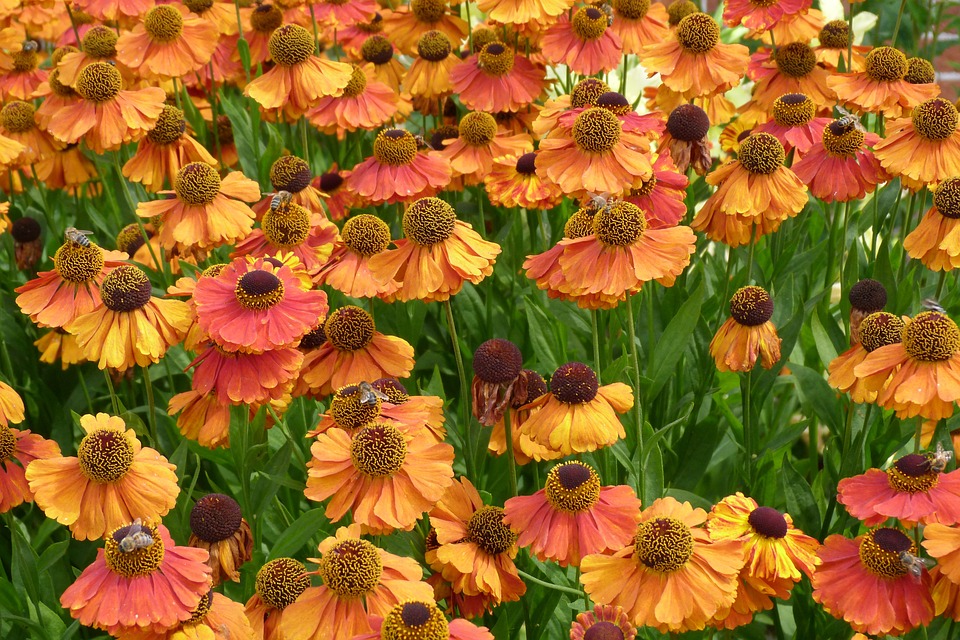Listen to this podcast on how to grow Helenium or sneezeweed perennial flower.
Watch this video about Helenium:
 It’s August and soon we’ll hit that quiet time in our perennial flower garden after the early summer flowers fade, but before the fall flowers shine. We’re always looking for plants to fill this late summer void and one of the best is Helenium.
It’s August and soon we’ll hit that quiet time in our perennial flower garden after the early summer flowers fade, but before the fall flowers shine. We’re always looking for plants to fill this late summer void and one of the best is Helenium.
Helenium is a hardy, native, aster-family perennial with few pests. It grows in the wild in damp areas in meadows. It also goes by the unfortunate common name of sneezeweed because it blooms when ragweed is flowering. Helenium doesn’t cause allergies but dried leaves were used in snuff to cause sneezing that would supposedly drive evil spirits from the body.
But there’s nothing evil about Helenium. Native forms grow 3 to 5 feet tall with Mexican hat-shaped, small flowers that form in clusters of gold, orange and burgundy. Newer varieties have better flowering and some, such as ‘Short N Sassy’ only grow 12 to 18 inches tall, fitting in small spaces easily.
Helenium grows best in full sun on moist, well-drained soil. Apply compost in spring, but don’t over fertilize or you’ll get lots of foliage and fewer flowers. Helenium is tolerant of seasonal flooding and makes a good rain garden perennial as well. Flowering starts in mid summer and lasts until frost, especially if you’re diligent about deadheading.
Plant tall varieties of Helenium in the back of a flower border with other tall perennials, such as goldenrod, Joe Pye weed and tall rudbeckia. These tall plants help keep Helenium vertical. Shorter varieties can be grow with echinaceas, daylilies and sedums. Helenium also attracts bees and butterflies making it a must for any pollinator garden.
Clumps don’t usually need dividing but can be split every 4 to 5 years. Deer, rabbits and wood chucks seem to avoid this perennial because of the bitter tasting foliage.
Excerpted from the Vermont Garden Journal on Vermont Public Radio.


